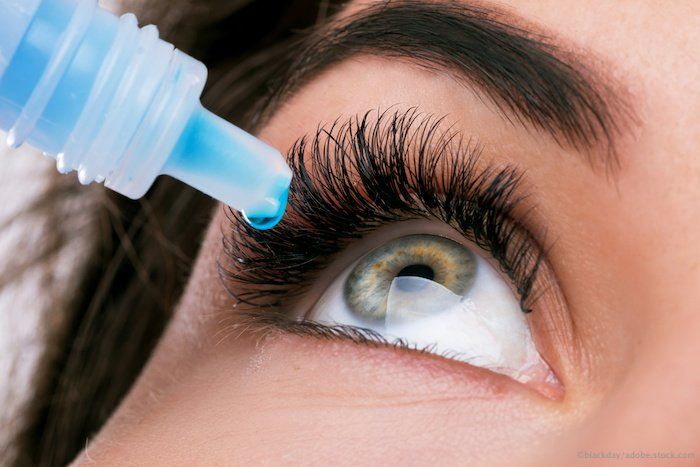Article
Ocular surface inflammation: Vicious cycle of ocular surface disruption
Author(s):

Disruption of the ocular surface results in a vicious cycle of inflammation and decreased quality of life.
Ocular surface inflammation may sound simple and specific but actually encompasses more than meets the eye.
The disorder affects the cornea, limbus, conjunctiva, and even the eyelids, with dry eye by far the most common patient diagnosis.
However, while dry eye is the stated problem among a major percentage of the patients presenting to clinical practices, numerous other ocular surface diseases are culprits in ocular surface inflammation, i.e., allergic conjunctivitis, episcleritis, scleritis, superficial punctate keratitis (from numerous causes), and toxicities from medications, wind, heat, or chemicals, according to Mark Milner, MD, FACS.
When considering inflammation’s effect on the ocular surface, the importance of maintaining the health of the ocular surface is underscored when its functions are recognized: maintenance of the health of the epithelium, preventing infection, and lubricating the ocular surface, all central to optimizing vision.
Impact of a dysfunctional ocular surface
“When the components of the tear film become dysfunctional, dry eye can develop,” Dr. Milner said, “and patients with ocular surface disease can be as heavily impacted as the lives of cardiac patients with angina. They cannot drive, read, use computers, and they concentrate on their ocular discomfort on a daily basis.”
In addition, dry eye disease affects every aspect of an eye care practice, e.g., a healthy ocular surface and tear film are critical to achieving successful outcomes after cataract and refractive surgeries. Unhealthy tear film can negatively affect intraocular lens power calculations and K readings as well as the postoperative vision and patient satisfaction
“Most physicians need to recognize that the ocular surface should be respected, because maintaining its normal status is critical to vision. The tear film is the first thing that light hits as it enters the eye, not the cornea. If the tear film is abnormal in a patient with dry eye, the vision is affected; the tear film also will most likely be affected if any ocular surface inflammation is present,” Dr. Milner, associate clinical professor, Yale University School of Medicine, New Haven, CT, stated.
Normal tear film is comprised of a superficial lipid layer, secreted by the meibomian glands, which minimizes evaporation to the outside environment, and the aqueous/mucin layer, an aqueous gel, the components of which are produced, respectively, by the lacrimal glands and goblet cells, Dr. Milner explained. Interference with the normal tear film functioning produces pathological cellular changes on the ocular surface.
He explained that when inflammation decreases with treatment and the function of the ocular surface and lacrimal glands improves, the tear film begins to normalize. The restoration of more normal neural feedback allows the lacrimal glands to produce more normal aqueous tears and other important components of the tear film. With improved quality of the tear film, this results in promotion of a healthier ocular surface.
Considering this, he pointed out that the signs and symptoms of ocular surface disease severely affect patients’ quality of life, and physicians may underestimate the degree to which this occurs.
Treatment
Effective therapy for ocular surface inflammation should address one or more of the pathophysiologic factors involved and work to break the cycle of pro-inflammatory effects, Dr. Milner said.
Three anti-inflammatory drugs are currently available to treat ocular surface disease: topical steroids, which are highly beneficial for acute ocular surface inflammation; the commercially available dry eye therapies, Restasis (Allergan) and Cequa (Sun Pharma), which are both cyclosporin formulations, and Xiidra (lifitegrast ophthalmic solution, Novartis) that suppress T-cells and inflammation; and omega-3 fish oils that are somewhat controversial but possess anti-inflammatory properties.
As with most therapies, steroids have advantages and disadvantages. The greatest disadvantages are the potential side effects and risks associated with long-term use.
Because of this, the cyclosporin formulations and lifitegrast can be used safely over the long term, and the topical steroids for dry eye and other ocular surface diseases during the induction phase of antiinflammatory therapy or during an episodic flare-up, Dr. Milner pointed out.
He likes to use Flarex (fluorometholone acetate ophthalmic suspension, Eyevance) to treat inflammation. The beauty of this formulation is the acetate component and not an alcohol component that some steroids contain.
“The acetate imparts better penetration and provides the efficacy of prednisolone acetate, a so-called strong steroid, while not sacrificing the safety of fluorometholone. It is the perfect ocular surface steroid,” he said.
Another option for the ocular surface that Dr. Milner prefers is FreshKote PF (Eyevance), a preservative-free artificial tear formulation packaged in a multidose bottle. The absence of the preservative is its greatest advantage that allows its use with contact lenses.
“This tear also has a triple action mechanism. It helps the mucoaqueous layer by mimicking the mucin layer, eliminating dry spots, and spreading the tears more evenly,” he said.
FreshKote contains povidone that helps the lipid layer and polyvinyl alcohol helps the aqueous layer. These components prevent tear evaporation. Finally, it has a high oncotic pressure that improves swelling of the ocular surface.
“A healthy ocular surface is paramount to optimal vision and comfort. Inflammation of the ocular surface can occur in a multitude of ocular surface diseases and is central to the cycle of dysfunction and destruction. The key to treatment is to break this cycle of inflammation,” Dr. Milner said.
Disclosures:
Mark S. Milner, MD, FACS
E: milnerms@aol.com
Dr. Milner is a speaker/consultant for Allergan, Bausch + Lomb, Shire/Novartis, TearScience, Sun, Ocular Science, Biotissue, Avedro, Omeros, Valeant, Eyevance, and Dompe. He does research for Kala, Eye Gate, Biotherapeutics, Aldeyra, and Icare, and has ownership interests in RPS, Eyevance, and Percept Corp.
Newsletter
Don’t miss out—get Ophthalmology Times updates on the latest clinical advancements and expert interviews, straight to your inbox.





